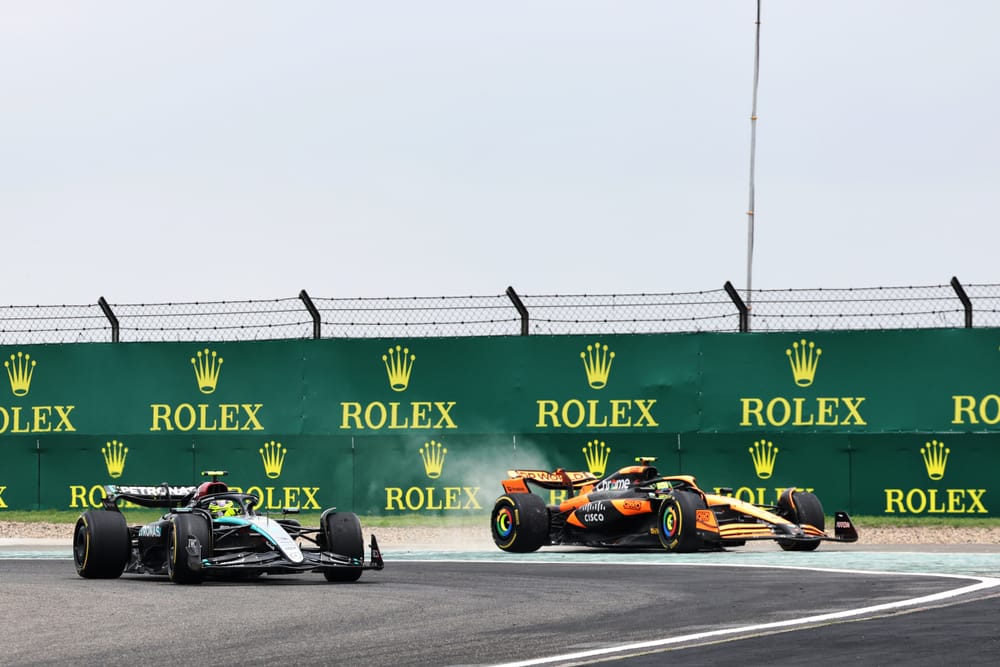Up Next

Behind the Red Bull front row (and the team’s 100th Formula 1 pole position), the Chinese Grand Prix grid order is slightly unusual.
Fernando Alonso’s Aston Martin in third is much further forward than expected. The Ferraris - invariably Red Bull’s closest challenger this year – are way back in sixth and seventh, separated from Alonso by the two McLarens. Mercedes suffered a particularly disastrous day with George Russell starting eighth and Lewis Hamilton 18th.
It all looks a little random. But it’s not. A very distinct driver of performance has emerged over the first two days of the return to the Shanghai track after five years – and the apparently skewed grid order is the result of that process playing out. The underlying performance beneath that is just as it usually is and the expectation is that tomorrow’s race will confirm exactly that.
The way the track grip has not evolved as in a typical grand prix weekend has quite radically changed the set-up scatter among the teams. Usually as the rubber goes down and progressively increases the track grip through the weekend, the cars will understeer more. The grip increases for all four tyres of course but the more powerful rears get a greater increase in grip than the fronts.
This is just part of the usual routine of a race weekend and the teams build it into their set up. At circuits where the expectation is that rear thermal degradation will be the limiting factor, that tendency towards understeer as the grip increases is actually very helpful, in that it protects the vulnerable rear tyres.
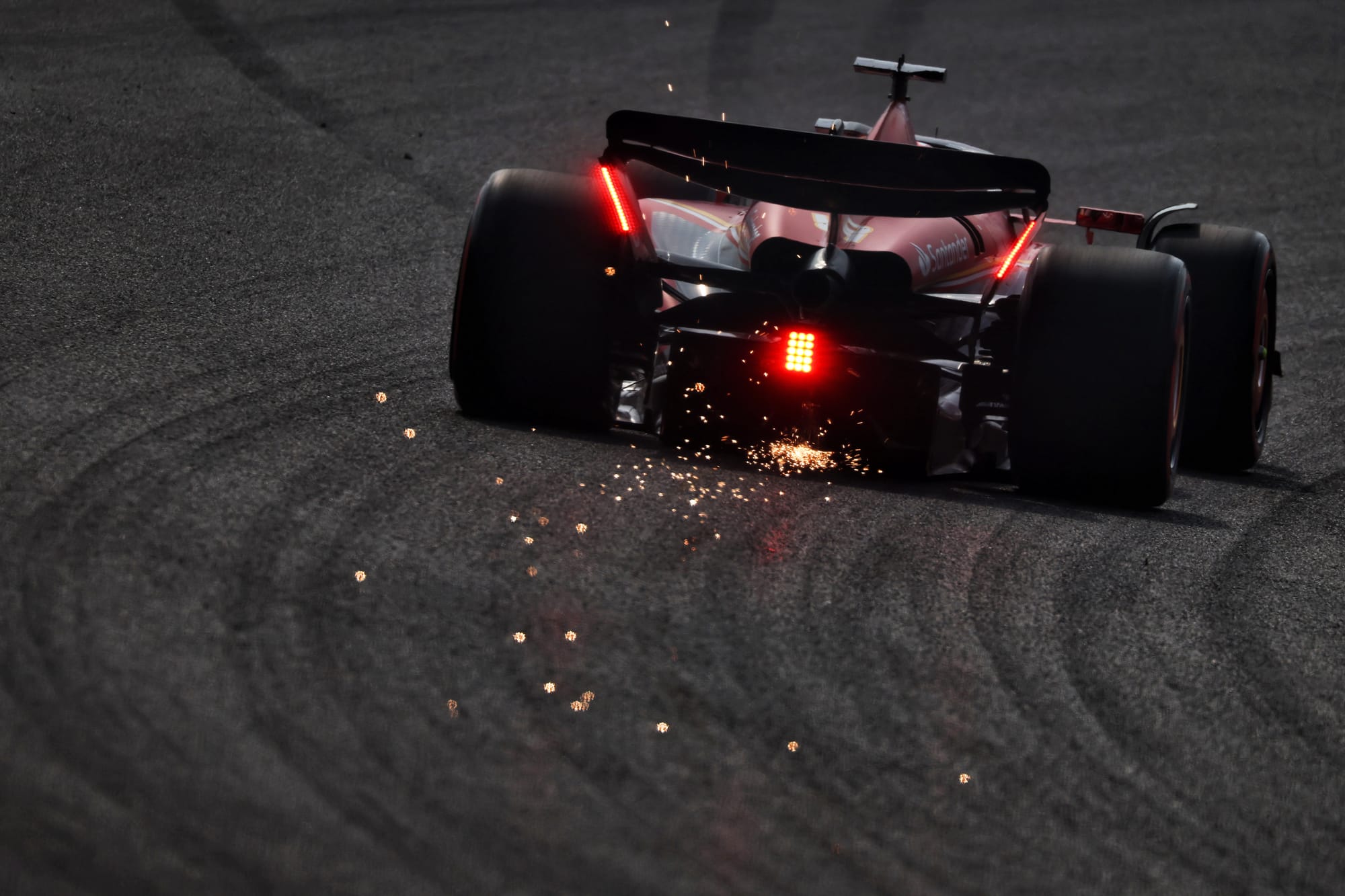
Shanghai has not in the past been a rear-limited track. Front tyre graining has always been the limiting factor and so the rears have not been unduly stressed. But this year is most definitely proving to be a rear-limited track.
The grip has not really ramped up, perhaps because of the protective surface coating which has been applied and partly thanks to the rain of Friday. So the balance of the cars was not moving towards understeer through the weekend in the way it usually does. As a consequence the rears are under more stress.
This process has only gradually been uncovered as each session has taken place but it was confirmed most definitely in the morning sprint race where Red Bull had an advantage even bigger than usual, the Ferraris were probably the second-fastest car as usual but thwarted by being stuck behind Alonso’s Aston and its heavily-degrading rears for the first half of the race. This kept the Ferraris and Sergio Perez‘s Red Bull off the back of Hamilton who was able to take a very well-judged, but distant, second place to Max Verstappen.
It's probably not a coincidence that the two cars really suffering from under-temperature tyres in Friday’s sprint qualifying – the Red Bulls and Ferraris – were the two fastest cars in the dry of the race, as they had the best tyre deg. Those generating good temperature in qualifying – the McLarens and Aston – were not quick in the sprint. The Mercedes fell probably somewhere between those two traits.
Because the new sprint parc ferme regulations – used for the first time this weekend – allow set-up changes between the sprint and grand prix qualifying, the sprint informed the set-up changes made into qualifying. Everyone was looking to protect the rears to a greater or lesser degree by introducing some understeer into their cars. But how much?
Complicating that choice was the effect of a strong wind. The track surface was relatively unchanging but the wind was wildly variable in its strength and direction. Which on a low-grip surface has an even bigger effect on the car balance.
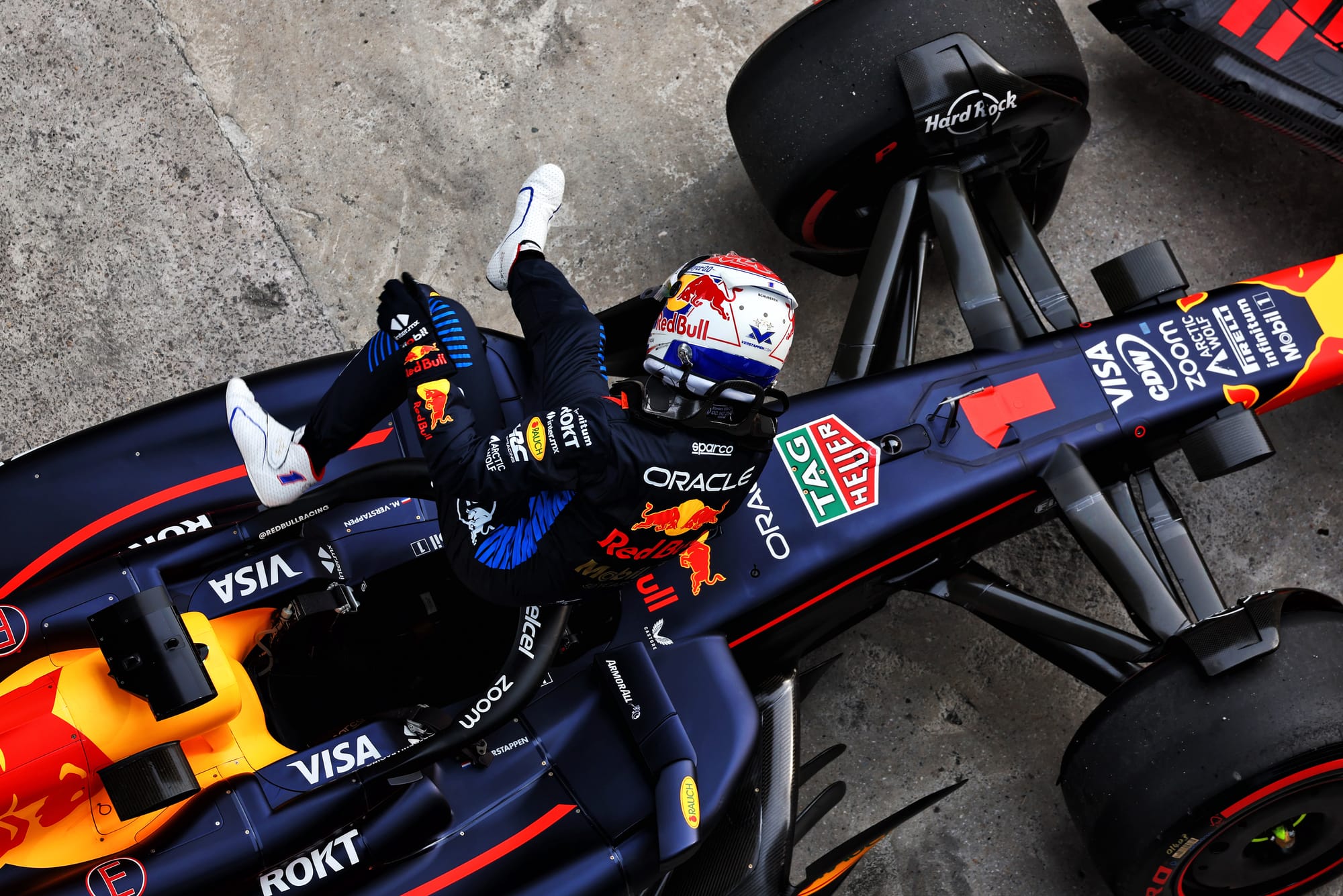
“It was confusing,” said grand prix polesitter Verstappen. “My first Q3 run was slower than in Q2. It might’ve been the wind. Around here the car’s balance is very sensitive to the direction of the wind. So for the final run I didn’t really know what to expect but everything came together, the grip felt a bit more normal.”
To put that into context, even his first Q3 run (0.2s slower than he’d been in Q2) would still have been good enough for pole…
The Red Bull, as a car generally believed to generate more of its total downforce from the underbody than others, is perhaps less adversely affected by the wind. Perez recovered from a messy session to go second, having almost got knocked out in Q1, aborting his new tyre lap after a territorial misunderstanding with Alex Albon.
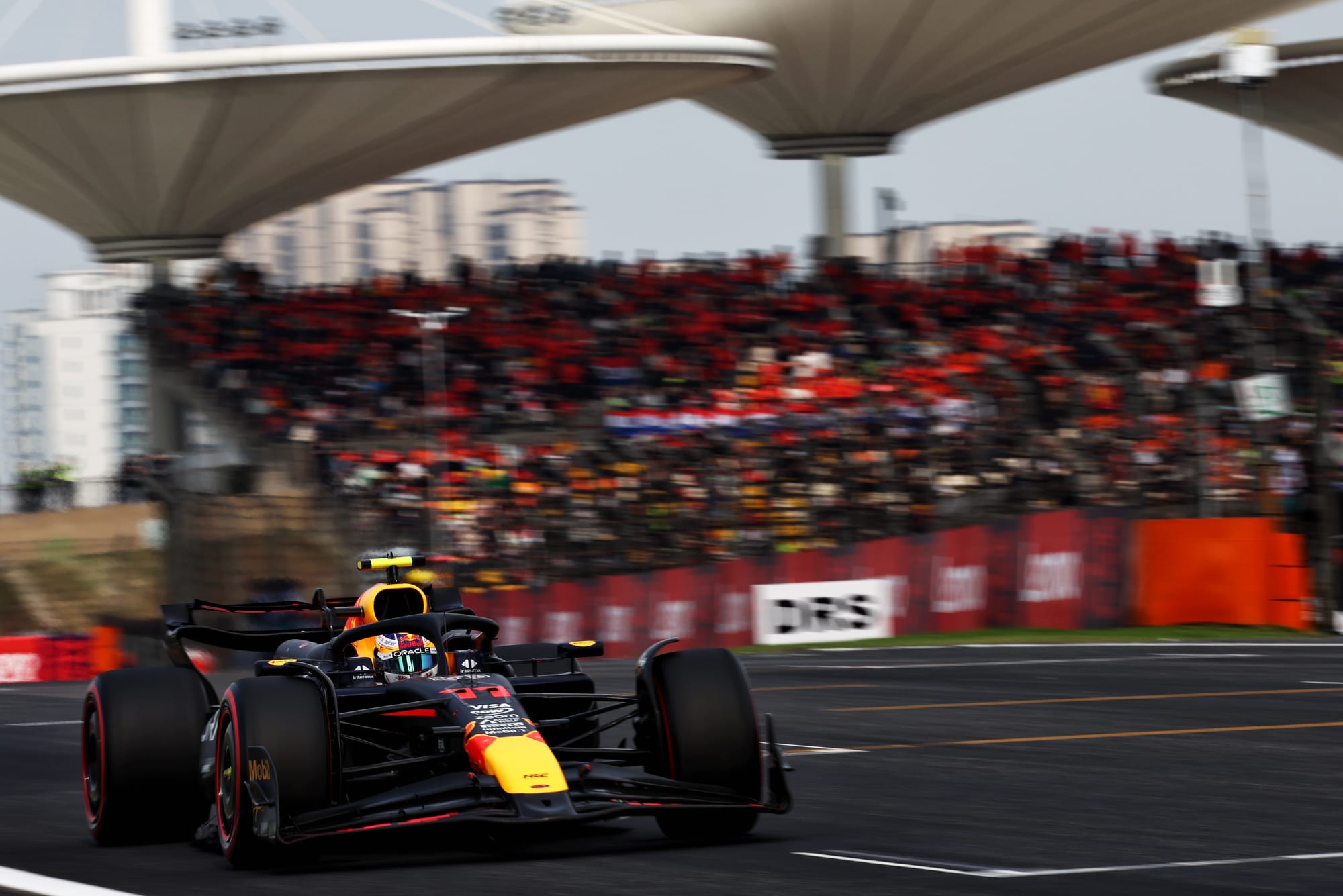
By the time he’d tried a little more front wing for his first Q3 run, then took it back out again, he really only began to get it together at the end. Had Alonso not suffered a bit of a snap at Turns 1-2 which lost him a couple of tenths, Perez may not even have made the front row.
Not that Alonso believes it would make much difference. “It doesn’t change too much for tomorrow to be P2 or P3 today. Seventh/eighth/ninth is our natural order [at the] chequered flag.
“We are slower than the Ferraris, slower than the McLarens, probably than the Mercedes but we out-qualify them often, then in the race we need to wait to see when they come, how fast they come and how many laps we can defend those positions. It’s happened so far like this in the first four races so I don’t see what it will be different in the fifth race. It will be a difficult race for us but we cannot say sorry for being too fast in qualifying.”
Looking at the in-car footage comparison between Alonso and Russell’s Mercedes, the Aston was clearly changing direction better. Did Alonso and Aston deliberately not engineer too much understeer in an attempt at artificially boosting grid position and just accepting the price of a very defensive race but from an initially better position? Possibly. More likely, it’s just where the natural balance range of the car falls and how it uses its tyres.
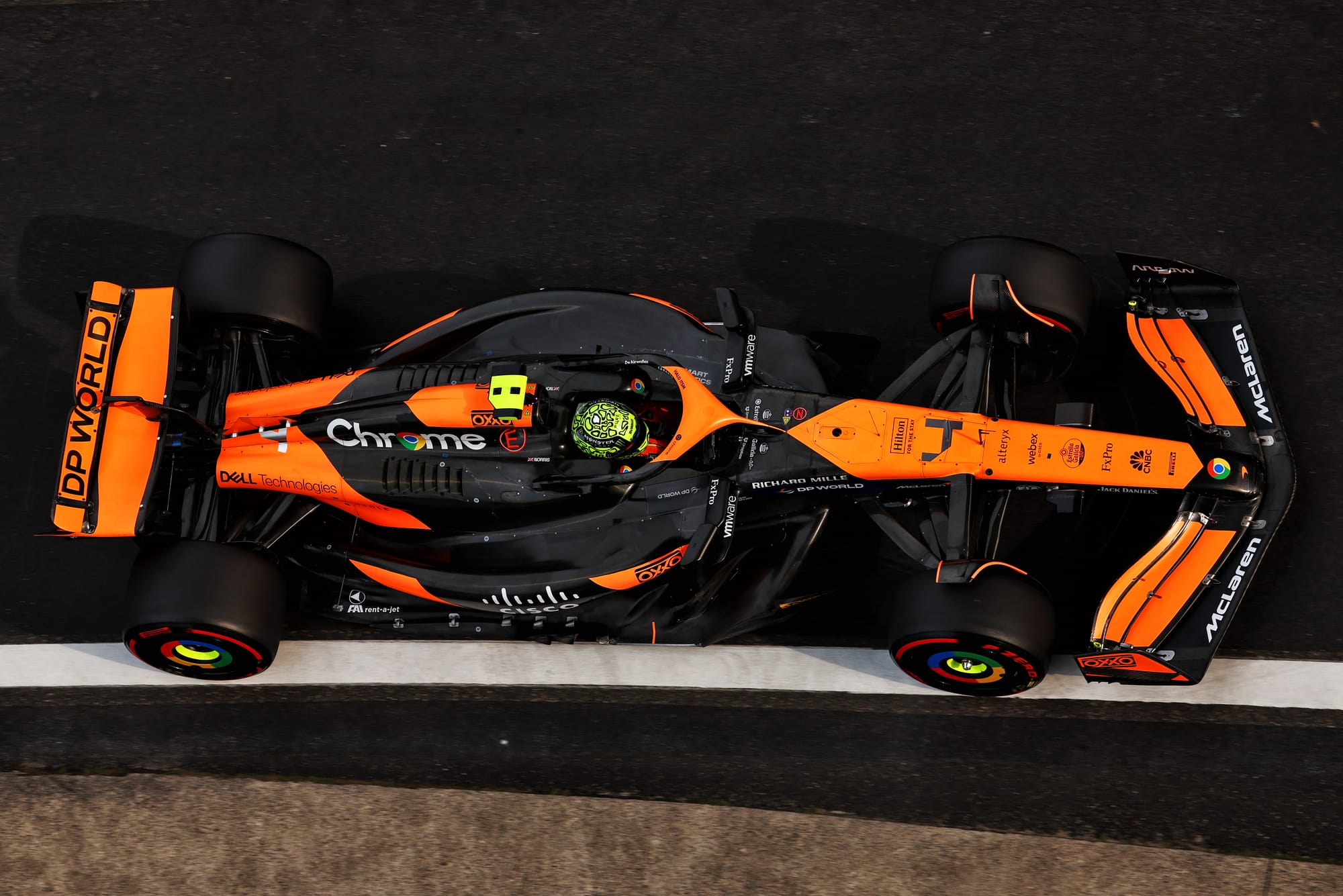
Lando Norris, within a couple of hundredths of Alonso, in fourth, is similarly pessimistic about how the McLaren will look after its rear tyres despite the changes made to his set-up after the sprint. “No. We’re getting a lot out the car but thermally looking after the tyres I don’t think we’re where we need to be. Not a lot we could do.”
Mercedes could clearly have performed better, losing out most obviously thanks to Hamilton under-estimating the strength of the tailwind into Turn 14 in Q1 and running disastrously wide, losing 0.4s and failing to clear the Q1 hurdle. Russell, having used up a set of softs in the sprint race had to use up another extra set in Q2 as he didn’t get to complete his initial lap thanks to the Sainz-induced red flag.
With just one Q3 run in the windy conditions, he was therefore not at his most confident. But the Merc has decent tyre deg, almost certainly better than the McLarens of Oscar Piastri and Norris and Alonso’s Aston.
Ferrari meanwhile is confident it is going forward. “We were expecting more [from qualifying],” admitted Charles Leclerc. “I know the set-up I have chosen was not ideal for today. But I did not expect to be behind Astons and McLarens. But I believe it’s good for tomorrow. I think we have the car to perform well tomorrow.
"It will be all about how fast are we passing the others. The main question mark is how long we are stuck in the DRS train before the guy at the front of the train loses the DRS. There will be laps when there isn’t DRS and we will have to take those opportunities to pass people.”


